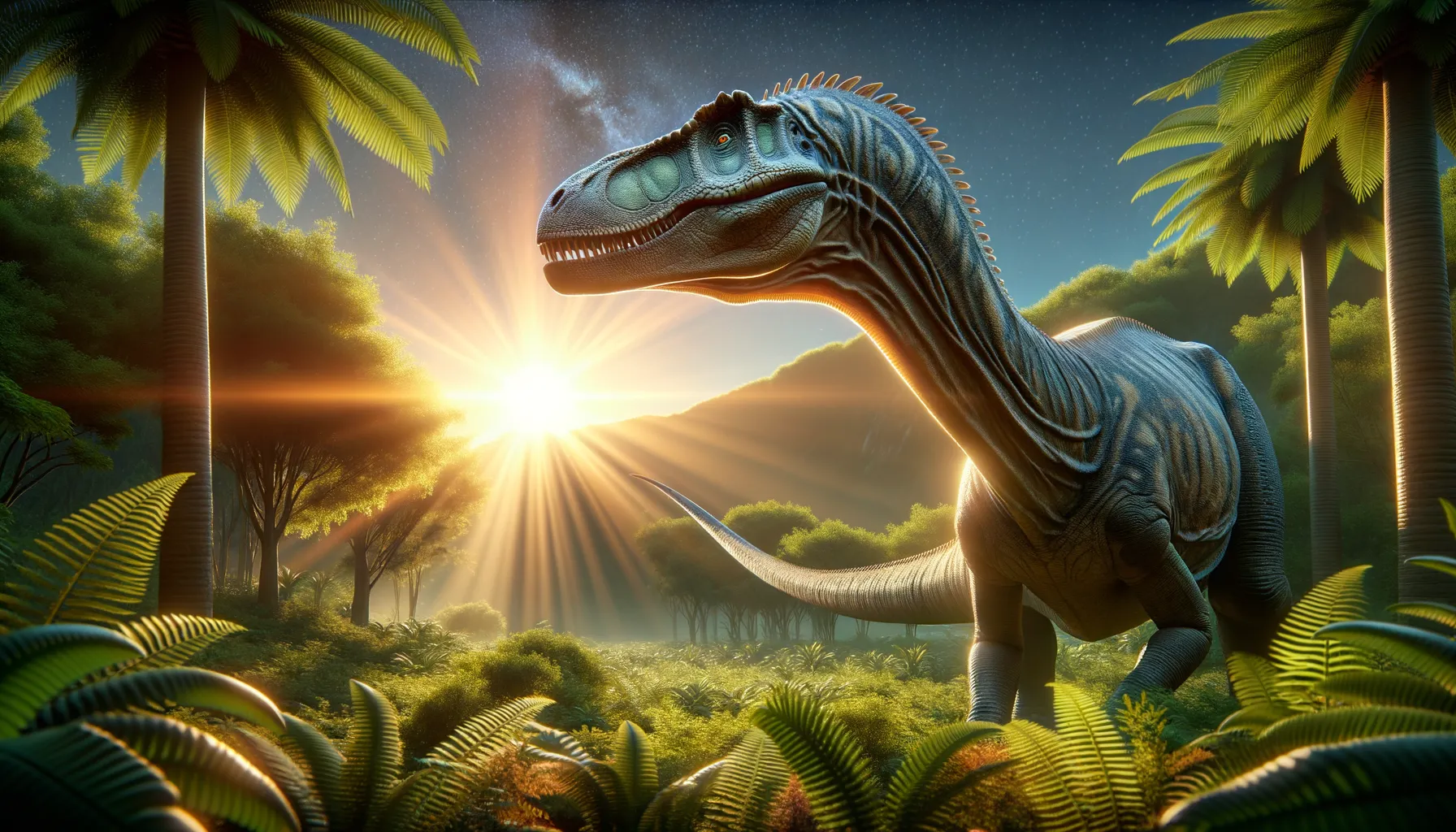
Rugocaudia
The gentle giant of the Cretaceous plains.
Period
Cretaceous
Length
Close to 50 feet long.
Height
Around 15 feet tall.
Weight
Approximately 15 tons.
Rugocaudia was a long-necked dinosaur known for its robust build and distinctive vertebral features. It roamed the Earth during the Late Cretaceous period, showcasing a massive body suited for a herbivorous lifestyle. This giant was a part of the sauropod lineage, featuring a long tail and neck which helped in foraging for foliage across vast landscapes.
Diet
Rugocaudia primarily fed on plants, using its long neck to reach high vegetation and its strong legs to support large quantities of foliage. Its diet consisted of conifers, cycads, and other Cretaceous plant life.
Hunting
As a herbivore, Rugocaudia did not hunt. It likely foraged for food, using its size to deter potential predators. Its feeding strategy involved grazing on high vegetation with its long neck.
Environmental challenges
Rugocaudia faced challenges such as changing climates and habitat shifts during the Late Cretaceous. Competition for food with other herbivores was a constant concern. Natural predators also posed a threat, requiring Rugocaudia to depend on its large size as a means of defense.
Speed
It moved at a slow and steady pace.
Lifespan
Estimated to live around 70-80 years.
First discovery
First discovered in 2009 in Montana, USA.
Fun Facts
- Rugocaudia was a plant-eating dinosaur that lived during the Late Cretaceous period, around 70 million years ago.
- The name Rugocaudia means 'wrinkled tail', referring to the unique texture of its tail vertebrae.
- Fossils of Rugocaudia have been found in North America, particularly in the state of Montana.
- Rugocaudia was a sauropod, meaning it had a long neck and tail, and walked on four legs.
- Despite its massive size, estimated to be about 49 feet long, Rugocaudia was likely a slow-moving creature.
- Its wrinkly-tailed design helped scientists learn more about the diversity of sauropod tails.
- Rugocaudia is believed to have lived in herds, using its long neck to reach high vegetation.
Growth and Development
Rugocaudia grew continuously throughout its life, with its rapid initial growth rate slowing as it matured. Its bones suggest a pattern typical of large sauropods, gaining significant mass during its early years. This growth allowed it to quickly reach a size that could deter predators.
Habitat
The habitat of Rugocaudia included lush plains and forested areas abundant with vegetation. These environments provided necessary resources for sustenance and protection. The terrain supported its massive size, offering wide spaces to move freely.
Interaction with other species
Rugocaudia coexisted with various herbivorous and carnivorous dinosaurs. Its size deterred many predators, although juvenile Rugocaudia were more vulnerable. It likely migrated in groups, offering protection and facilitating social interactions with other sauropods.
Natural lifespan
Rugocaudia is believed to have lived around 70-80 years naturally.
Reproduction
Rugocaudia reproduced by laying eggs, typically in nests constructed in secluded areas. The parental investment might have involved guarding the eggs, minimizing predation risks. After hatching, the young would grow rapidly to bypass early vulnerability.
Social behaviour
Rugocaudia likely exhibited herd behavior, providing mutual defense and social interaction. Its social structure might have included hierarchies based on size or age. These groups helped in navigating and surviving the Late Cretaceous environment.
Fossil locations
Fossils of Rugocaudia have been primarily found in North America, specifically in regions like Montana. These findings provide insights into the Cretaceous ecosystem and the distribution of sauropods during this era. The discovered fossils include vertebrae and limb bones that helped classify and understand this dinosaur.
